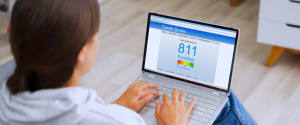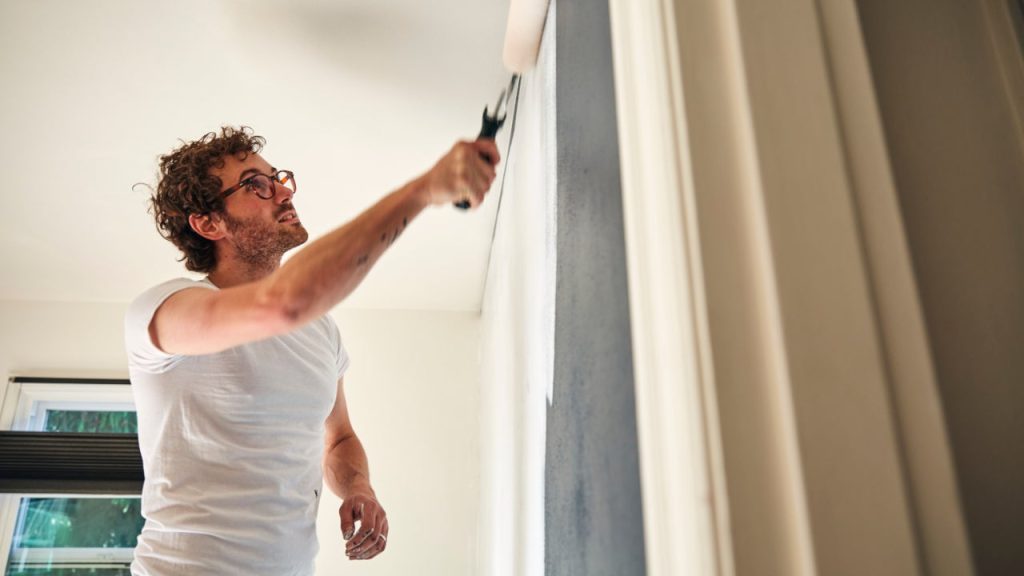Key takeaways
- Unsecured home improvement loans can be a financing solution when you need quick funding, don’t want to dip into your savings or put your house on the line to get money for renovations.
- These loans don’t require collateral, so they’re issued based on credit.
- Before taking out an unsecured home improvement loan, consider drawbacks, like shorter repayment periods and higher interest rates than secured options.
An unsecured home improvement loan is a type of personal loan that has no asset attached to it to secure the debt. Unlike home equity loans or home equity lines of credit (HELOCs), the lender can’t foreclose on your home if you default on an unsecured loan. Additionally, you don’t need equity in your home to qualify for these loans, as they are issued based on creditworthiness.
There are five main considerations to keep in mind when deciding whether an unsecured home improvement loan is the best option for you.
1. Unsecured loans come in lower dollar amounts
Since unsecured loans are more risky for lenders, they usually come with lower maximum loan amounts. Many lenders allow you to borrow up to $50,000, although a few have $100,000 caps. Still, the loan amount may not be sufficient to cover the costs of the home improvements you have in mind.
The loan amount will be based on your income, debt-to-income ratio (DTI) and credit score. If you have more than $100,000 worth of equity in your home, you could potentially borrow more money with a home equity loan than with an unsecured home improvement loan.
Takeaway
The loan amount you’re approved for may be lower than what you’d get with a home equity loan product, depending on your income, current debt load and credit health.
2. Repayment terms are usually shorter
Another factor to consider when deciding how to pay for home improvements or home repairs is that loan terms are usually shorter for unsecured personal loans than for secured loans. While home improvement loans usually have terms that range from two to 12 years, home equity loans have terms that range from five to 30 years.
Having a longer repayment term might be better for your budget since your monthly payments could be lower. However, the downside to this is that you’ll end up paying more in interest during the life of the loan.
For example, if you get a 10-year home improvement loan for $50,000 with a fixed rate of 12 percent, you’ll pay $717 each month and $36,082.57 in interest over the loan term. But if the term is extended to 30 years, your payment will drop to $514, but you’ll pay $135,150.27 in interest.
Takeaway
A shorter loan term means a higher monthly payment, but you’ll likely save a bundle in interest over the loan term. You can use a personal loan calculator to estimate your monthly payments.
3. They are quick to obtain, and some come without fees
Unsecured loans are issued based on your creditworthiness and income, so they can be as quick and easy to get as a credit card. Also, some lenders offer same-day approval and will deposit your funds into your account as soon as the next business day. The seamless process and quick funding times mean you can start your home improvement projects sooner than later.
In addition, some lenders, like LightStream, don’t charge any fees for these loans. Common fees include application fees, origination fees and returned payment fees. There’s also the possibility of prepayment penalties, which are fees for paying off your loan ahead of schedule.
If you get a home equity loan or HELOC, you may have to pay closing costs that could cost you several thousands of dollars — typically between 2 percent and 5 percent of the loan amount.
Takeaway
Unsecured home improvement loans often feature fast funding times and minimal fees compared to home equity loan products.
4. You may pay higher interest rates without collateral
If you choose an unsecured loan for home improvement, you might pay a higher interest rate since these loans are riskier for the lender. Rates for home improvement loans currently range from about 6 percent to 36 percent, with the average rate being a little over 12 percent.
By contrast, the average home equity loan rate ranges from roughly 8.45 percent to 10.11 percent, and the average HELOC rate ranges from a little over 8.59 percent to 11.14 percent.
The rate you receive on your home improvement loan depends on a few factors, mainly your credit score. Generally, the best rates are reserved for borrowers with the highest scores.
To get an estimate of what your rate might be, get prequalified for a loan with multiple lenders if possible.
Takeaway
The interest rate on an unsecured loan for home improvement could be higher to offset the risk the lender assumes since it’s an unsecured debt product.
5. You’ll need good credit
To qualify for a large loan amount, you’ll need good credit— a credit score of 670 or more, according to the FICO credit scoring model. You might not meet the lender’s minimum credit scoring requirements if you have poor or bad credit. Even if you are approved, you’ll most likely qualify for a lower loan amount with a higher interest rate.
For example, a five-year, $15,000 loan with a 12 percent interest rate will cost you $5,020 in interest. But a loan for the same amount with a 20 percent interest rate will cost you $8,844.50.
If you have bad credit and you’re willing to pay more for a home improvement loan, consider applying for a home improvement loan for bad credit. Some lenders might approve you for a loan with a credit score as low as 550.
To improve your chances of qualifying for a loan or getting a lower rate, you can apply with a co-borrower or co-signer if the lender lets you. Alternatively, you can take steps to improve your credit score before applying, such as paying down debt.
Takeaway
A good credit score is typically required to get the most competitive terms on an unsecured loan for home improvement.
Alternatives to unsecured loans
If you’d prefer to explore other options, consider paying with cash or a credit card.
-
It could take some time to save up enough to pay for home improvements. The upside is you can complete projects without racking up debt and having to repay lenders for years to come.
-
You can use a credit card to cover the cost of minor upgrades. If possible, use a card with a 0 percent introductory rate to avoid paying interest. That said, make sure you pay the balance in full before the promotional rate period ends for this payment strategy to make sense. Otherwise, a small purchase could cost you several hundred or thousands more in interest.
-
Secured loans are ideal if you have less-than-perfect credit as they’re generally easier to qualify for, as they are secured by an asset. Secured loans include home equity loans and HELOCs.
Although funding for these may take longer — as previously mentioned — they may be worth considering in this scenario as you’ll likely get a lower interest rate. Likewise, they could be a better option to unsecured loans if you need to borrow a larger amount and need a more comfortable repayment term.
Managing the loan responsibly could also help improve your credit score over time if the lender reports payment activity to the major credit bureaus — Experian, TransUnion and Equifax.
Bottom line
Unsecured loans can be a viable option to pay for home improvements without dipping into your savings. Plus, unlike home equity loans or HELOCs, they’re less risky as your home won’t automatically be at risk for foreclosure if you fall behind on the loan payments.
But if you’ve already tried applying for an unsecured loan and didn’t get approved, you’re not completely out of luck. Consider paying cash, using a credit card or getting a secured loan, instead.
Read the full article here










